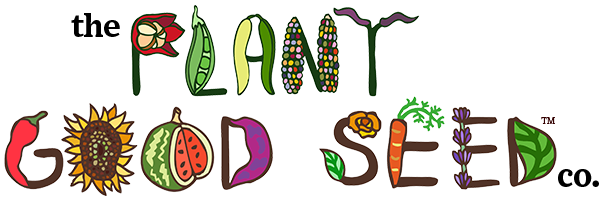
Marshmallow (Althaea officinalis) is a perennial plant indigenous to Europe, Western Asia, and Northern Africa. Historically used for creating the marshmallow confection, the plant is now predominantly grown for making herb teas and as beneficial insect attracting shrub. Marshmallow’s creamy white roots are extremely mucilaginous and have a wonderful flavor when simmered. Second year plants can reach up to six feet tall and form gorgeous white/light purple blossoms. How large plants grow contingent of how much water they receive. Provide plants generous spacing, as root crowns can increase substantially year over year.
Marshmallow is a perennial plant frost hardy to zones 3 and above. Large stalks and flowers form on second year plants. We recommend waiting to harvest roots until their second year of establishment, as improper harvesting may kill first year plants. With that said, first year root harvests are possible if you start seeds in late winter/early spring.
Seeds are certified organic.
Marshmallow (Althaea officinalis) is a perennial plant indigenous to Europe, Western Asia, and Northern Africa. Historically used for creating the marshmallow confection, the plant is now predominantly grown for making herb teas and as beneficial insect attracting shrub. Marshmallow’s creamy white roots are extremely mucilaginous and have a wonderful flavor when simmered. Second year plants can reach up to six feet tall and form gorgeous white/light purple blossoms. How large plants grow contingent of how much water they receive. Provide plants generous spacing, as root crowns can increase substantially year over year.
Marshmallow is a perennial plant frost hardy to zones 3 and above. Large stalks and flowers form on second year plants. We recommend waiting to harvest roots until their second year of establishment, as improper harvesting may kill first year plants. With that said, first year root harvests are possible if you start seeds in late winter/early spring.
Seeds are certified organic.
Marshmallow (Althaea officinalis) seed germination will be sped up and made more reliable by light scarification before planting - gently knick the seed coat with sandpaper or a small blade. This will make it easier for water to penetrate the seed and kick off the growth process. Cover the seed with a very light layer of soil and pat it in to establish good contact.
As the word “marsh” in the name indicates, this mallow likes water - consider planting in a damper spot in the garden, or remember that providing regular water will help it grow to its fullest expression. That said, I’ve abandoned marshmallows to their own devices in sandy dry soils and still had them survive and even eventually flourish - they seem to be quite adaptable.
In the first year of growth, this plant may only produce a single stalk, but patience is rewarded as in the second, or possibly third, year you will have a robust shrubby mallow up to 5 or 6 feet tall producing lovely white flowers all summer long.
Through the summer you can harvest and dry the leaves to make a mild tasting, lightly mucilaginous tea. The leaf, the flower and the root are indicated for soothing agitated internal mucous membranes and can provide some relief to a sore throat, an upset stomach (especially where the stomach lining may be compromised such as with ulceration), or urinary tract issues. The anti-inflammatory and healing-by-soothing functions of this plant have been investigated in numerous animal (https://pubmed.ncbi.nlm.nih.gov/21281251/) and in-vitro (https://www.ncbi.nlm.nih.gov/pmc/articles/PMC7090173/) studies.
Most literature suggests waiting till year two to harvest the root, but year three might be even better - judge whether it’s ready to be dug up by the size and condition of your plant. Roots are best dug in the fall, after the plant stalks have died back, and you can replant the root crown after removing three quarters or so of the root for use. To store, wash the root right after the harvest, and cut up into small chunks with sharp pruners. The smaller the pieces the easier it will be to dry. Lay out to dry and once initial moisture has evaporated, you can finish off the drying process in a dehydrator if you have access to one. Otherwise, a dry shady place with some airflow should work fine.
To prepare the root as tea, you will need to simmer it for about 15 minutes. If you want to add marshmallow root to a tea blend, you can powder the root in a coffee grinder - this way you can just steep it in hot water as you would with dried leafy herbs. Powdered herbs are said to lose their potency faster, so I recommend grinding up only as much as you need for single use.
-Goda
Collections: All Products Bulk Sizes Marshmallow
We use cookies on our website to give you the very best shopping experience we can. By using this site, you agree to its use of cookies.
Emails every 4-6 weeks featuring compelling original gardening content, new variety announcements, sales, and event appearances.
